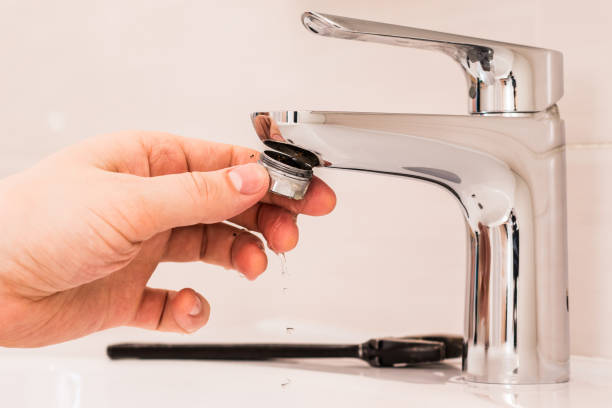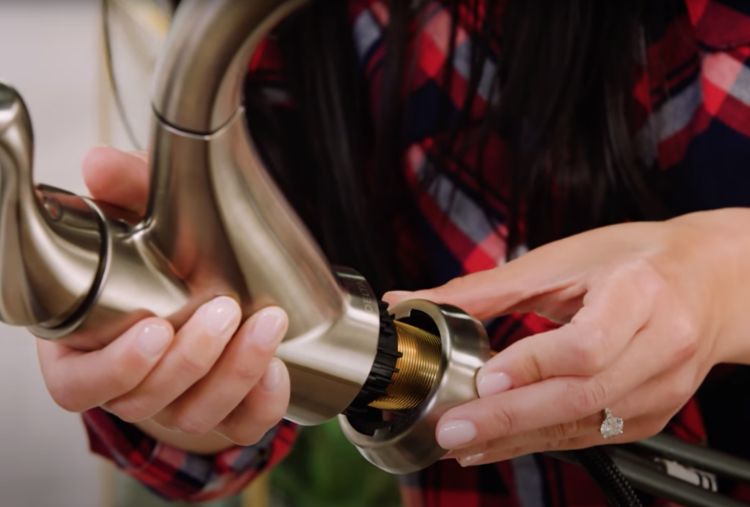The Benefits of Correcting a Dripping Faucet
The Benefits of Correcting a Dripping Faucet
Blog Article
Presented here in the next paragraphs you can discover a good deal of high-quality additional info with regards to What Causes Leaky Faucets & How To Fix Them.

Trickling taps might seem like a minor hassle, however their effect surpasses simply the aggravation of the audio. From drainage to incurring unnecessary financial costs and health risks, ignoring a dripping tap can bring about numerous effects. In this post, we'll explore why it's important to address this common house problem without delay and successfully.
Waste of Water
Environmental Influence
Leaking faucets add significantly to water waste. According to the Environmental Protection Agency (EPA), a solitary faucet trickling at one drip per second can waste greater than 3,000 gallons of water per year. This not just stress water resources however also impacts ecosystems and wild animals dependent on them.
Step-by-Step Guide to Dealing With a Dripping Faucet
Devices Called for
Before trying to deal with a dripping tap, collect the needed tools, including a flexible wrench, screwdrivers, substitute parts (such as washers or cartridges), and plumber's tape.
Typical Tap Issues and Their Solutions
Recognize the kind of faucet and the certain concern creating the drip. Common problems include worn-out washers, corroded valve seats, or malfunctioning O-rings. Describe supplier guidelines or on-line tutorials for detailed advice on repairs.
Financial Prices
Raised Water Costs
Beyond the environmental influence, trickling taps can pump up water bills substantially. The accumulated wastefulness gradually equates into greater utility expenses, which can have been prevented with timely fixings.
Possible Property Damages
Furthermore, long term leaking can lead to harm to fixtures and surface areas surrounding the faucet. Water buildup can trigger discoloration, corrosion, and also structural concerns if left unattended, leading to added repair work expenses.
Health Issues
Mold And Mildew and Mold Growth
The continuous visibility of dampness from a dripping faucet produces a perfect atmosphere for mold and mildew and mold development. These fungis not only compromise indoor air high quality however likewise present wellness threats, specifically for people with respiratory system problems or allergic reactions.
Waterborne Diseases
Stagnant water in dripping taps can come to be a breeding place for microorganisms and various other microorganisms, enhancing the risk of waterborne diseases. Impurities such as Legionella microorganisms prosper in stagnant water, potentially bring about significant health problems when ingested or inhaled.
Do it yourself vs. Expert Repair
Pros and Cons of Do It Yourself Repair Work
While some might attempt to fix a leaking faucet themselves, do it yourself repairs feature their own collection of difficulties. Without correct understanding and devices, DIY attempts can aggravate the problem or bring about incomplete repair services, lengthening the problem.
Benefits of Hiring a Professional Plumber
Hiring a specialist plumber ensures that the underlying source of the leaking tap is addressed effectively. Plumbings have the know-how and devices to detect and fix tap concerns successfully, conserving time and decreasing the risk of further damages.
Ecological Duty
Specific Payment to Preservation
Taking obligation for taking care of leaking faucets aligns with more comprehensive initiatives towards water conservation and environmental sustainability. Every person's activities collectively make a significant influence on maintaining valuable resources.
Lasting Living Practices
By prioritizing timely repairs and taking on water-saving routines, individuals add to sustainable living techniques that benefit both existing and future generations.
Preventive Measures
Normal Maintenance Tips
To stop dripping taps, perform regular upkeep such as cleaning up aerators, evaluating for leakages, and replacing worn-out components promptly. Furthermore, take into consideration installing water-saving gadgets or updating to more effective components.
Relevance of Prompt Repair Works
Attending to trickling taps as soon as they're discovered stops further water wastage and potential damage, eventually saving both water and money over time.
Effect On Building Worth
Assumption of Well-Maintained Property
Maintaining a residential or commercial property in good condition, including addressing upkeep concerns like leaking faucets, enhances its perceived value and worth amongst prospective buyers or lessees.
Impact on Resale Value
Properties with properly maintained plumbing components, including taps, command higher resale worths in the realty market. Addressing leaking faucets can add to a positive perception throughout home inspections and settlements.
Conclusion
Attending to a trickling faucet exceeds plain ease; it's an essential action towards preserving water, reducing monetary costs, and protecting health and residential or commercial property. Whether through DIY repairs or expert help, doing something about it to fix dripping faucets is a small yet impactful way to promote responsible stewardship of resources and contribute to a healthier, more sustainable future.
How to Fix a Leaky Faucet: Step-by-Step Repair Guide
A leaky faucet may seem like a simple annoyance, but if it's not fixed promptly, that leak could cost hundreds to potentially thousands. From water damage to mold, mildew, and high water bills, even a tiny leak can be catastrophic if left unattended. Damage like this can even affect the overall value of your home, so it's important to take the right approach for leaky faucet repair. You may need the help of a plumber in some cases, but we've got a few tips you can try on how to fix a leaky faucet before calling the pros.
Four Faucet Types
When you're learning how to fix a leaky faucet, the first step is knowing what kind of faucet you're working with! There are four common types.
Cartridge Faucets
Cartridge faucets come in one- or two-handled varieties. In one-handled cartridge faucets, hot and cold water combines in a single cartridge. In the two-handled versions, hot and cold water are controlled separately and mixed in the faucet.
Ball Faucets
Ball faucets have a single lever you push up and down to adjust the pressure and rotate to change the temperature. A slotted metal ball controls the amount of water allowed into the spout.
Compression Washer Faucets
They're the oldest type of faucet, but they're still used in many homes — especially older ones. Compression faucets have two separate handles that, when turned, raise or lower the washer that seals a water valve. This valve stops water from flowing through the faucet when it is turned off.
Disc Faucets
Disc faucets rarely need to be repaired due to their maintenance-free design. The water flow is controlled by two discs — the upper one raises and lowers against a fixed lower disc, creating a watertight seal. If your disc faucet starts leaking, you may need to replace the seals or clean residue buildup from the inlets.
Fixing a Leaky Faucet
Step 1: Turn Off the Water
Whether you're learning how to fix a leaky bathtub faucet or how to fix a leaky kitchen faucet, always turn off the water supply to your working area when you're fixing a leak. The last thing you want is a flood added to your list of things to fix.
Look for the shutoff valves below your sink or around the tub and turn them clockwise to stop the water flow. If your faucet doesn't have shutoff valves, you may need to turn off the water for the whole house. Check to make sure it's off by turning the faucet on. If nothing comes out, you're ready to start the repair.
Step 2: Take Apart the Faucet
How you disassemble your faucet depends on the type of fixture you have. You can use a flathead screwdriver to remove the caps on top of the handle or handles for cartridge and compression faucets. Inside, you should see handle screws. Unscrew these with a screwdriver to remove the handle.
Disc- and ball-style faucets will typically have an inlet screw near the handle, and removing that will reveal the interior of the faucet.
Detach the Valve Stem
For cartridge- and compression-style faucets, you'll see the inner valve stem or cartridge once you remove the faucet handles. If you have a compression faucet, unscrew the brass valve stem. If you have a cartridge faucet, pull out the cartridge. If your cartridge has been in place for a while, it may require some tools or extra force to remove it due to mineral deposits.
Examine and Replace Parts
Once you've removed the parts, check them out to confirm what needs to be replaced. You may see corroded rubber washers, O-rings, stems, or cartridges. On a ball-style faucet, check the seats and springs for damage.
If you need to repair a leaky disc faucet, check the inlet and seals on the lower disc.
Once you determine what parts must be replaced, visit your local hardware store. Bring the damaged parts with you to ensure you can purchase the correct components to replace them.
Clean Valves and Faucet Cavity
If you've removed a stem or cartridge, you may notice mineral buildup in the faucet's threads. Use white vinegar to clean the valve seat by soaking it for a few minutes, then scrub it away with a soft toothbrush and rinse with warm water. You can also clean the interior of the faucet in the same way.
Reassemble the Faucet
Once your faucet is cleaned and the required parts have been replaced, it's time to reassemble it. Put the pieces back together and slowly turn the water supply back on. Doing this slowly is crucial because too much initial water pressure can damage the new hardware you've just installed.
https://homewarranty.firstam.com/blog/how-to-fix-leaky-faucet

Do you appreciate reading up on Should I Repair or Replace a Leaky Faucet?? Create feedback below. We will be delighted to hear your opinion about this blog posting. Hoping that you come back again in the near future. Be sure to take the time to distribute this blog entry if you enjoyed it. Kudos for being here. Please check our blog back soon.
Report this page